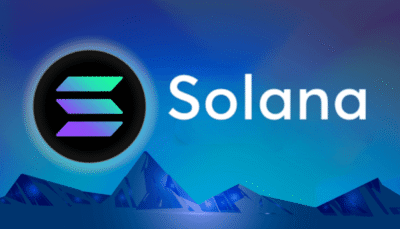HIVE Digital Technologies is planning an ambitious expansion, aiming to quadruple its Bitcoin mining hash rate by September 2025 while simultaneously targeting $100 million in annual revenue from High-Performance Computing (HPC).
This strategy could position the company among the top 10 public Bitcoin miners by operational size.
Aggressive Hash Rate Expansion
HIVE Digital (TSX.V: HIVE; NASDAQ: HIVE) currently operates at 6 EH/s and aims to scale to 25 EH/s by September 2025, a fourfold jump that could redefine its industry position. The expansion involves deploying 11,500 Avalon A1566 units, with 6,500 already operational as of February 11, 2025.
To support its rapid growth, HIVE has acquired Bitfarms’ mining facility in Yguazú, Paraguay. The site, which operates on 200 megawatts (MW) of hydroelectric power, will be expanded to 300MW, making it one of the largest Bitcoin mining facilities in Latin America. The company’s roadmap includes three major expansion phases: a 100MW addition in April 2025, another 100MW in June 2025, and a final 100MW boost in September 2025. CEO Aydin Kilic emphasized that while opportunities exist in the U.S., HIVE’s primary focus remains on Paraguay due to its low-cost hydroelectric energy.
Financial Performance and Market Positioning
HIVE’s financial results for the fiscal third quarter of 2025 (October 1 to December 31, 2024) reflect both challenges and progress. Revenue declined 6.5% year-over-year (YoY) to $29.2 million, primarily due to the Bitcoin halving event in April 2024, which reduced mining rewards. Bitcoin production dropped 61% YoY, from 830 BTC to 322 BTC. However, profitability improved significantly, with the company reporting a net income of $1.3 million, reversing a $7 million net loss from the previous year.
The shift to profitability was driven by a $6.9 million gain on asset sales, a $5.7 million foreign exchange gain, and cost optimization efforts. However, the gross margin declined from 36% to 21% due to increased network difficulty and higher energy costs in Sweden, where tax policy changes have impacted operational expenses.
HIVE’s balance sheet shows total assets of $478.6 million, a 55.6% increase from March 31, 2024. Bitcoin holdings stand at 2,805 BTC, representing 67.5% of its market capitalization. The company maintains a low debt-to-equity ratio of 0.10, reflecting a preference for equity raises over debt financing. HIVE raised $121 million through equity offerings while repaying $3 million in loans.
HPC and AI: A New Revenue Stream
HIVE’s transition into the HPC and AI computing sector is emerging as a critical growth driver. Initially leveraging its GPU-based Ethereum mining expertise, the company reported $1.61 million in HPC hosting revenue as early as 2023. In fiscal Q3 2025, HPC revenue surged 124% YoY to $2.5 million. The company expects this figure to climb to $20 million next quarter and reach $100 million annualized by the end of 2025.
HIVE currently operates 4,000 GPUs, including NVIDIA A4000, A5000, A40, and H100 units. By the first quarter of 2025, the company expects to deploy 508 Nvidia H200 GPUs, projected to add $9 million in quarterly revenue. To enhance credibility, HIVE has secured Nvidia Cloud Partner status and is preparing for next-generation liquid-cooled Blackwell GPUs.
Unlike competitors that prioritize hyperscaler partnerships, HIVE is positioning itself as a direct provider for Large Language Model (LLM) computations through marketplace aggregators. This strategy could increase margins while providing a more stable revenue stream compared to Bitcoin mining.
Strategic Shifts and Regulatory Adjustments
HIVE has recently relocated its head office to San Antonio, Texas. Executive Chairman Frank Holmes cited a shifting U.S. regulatory environment that favors Bitcoin mining, blockchain networks, and self-custody of digital assets. Additionally, the company is transitioning to U.S. GAAP reporting by the fiscal year ending March 31, 2025, to improve transparency and comparability with industry peers.
This change addresses concerns about HIVE’s financial reporting, as the company has historically used adjusted non-IFRS metrics. These adjustments, which exclude depreciation, stock-based compensation, and Bitcoin fair value changes, have resulted in discrepancies when comparing HIVE’s financials to its competitors. The transition to GAAP should provide investors with a clearer picture of HIVE’s operational performance and financial health.
Outlook and Industry Implications
HIVE Digital’s strategic pivot toward HPC and AI computing, alongside its aggressive Bitcoin mining expansion, underscores its ambition to scale operations and diversify revenue streams. The company’s mining cost per Bitcoin stands at approximately $57,000, with direct energy costs at $33,000 per BTC. Improvements in fleet efficiency, targeting 16.5 joules per terahash (J/TH) by September 2025, could further reduce costs.
However, challenges remain. The success of the Paraguay expansion is contingent on infrastructure development timelines and potential regulatory risks. Bitcoin price volatility also remains a critical factor, as HIVE’s gross margins are already under pressure. Meanwhile, achieving the projected $100 million in HPC revenue would require an exponential increase from the $8.84 million generated in 2024, presenting execution risks.
HIVE’s success hinges on executing its Paraguay expansion and scaling HPC revenue. If it delivers, it could join the top 10 public Bitcoin miners—if not, execution risks may weigh on its valuation.





